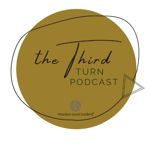
Momentum can help or harm.
If you have made it to a ski slope in this unusual year, you have recently seen that once inertia is overcome, it becomes easier to make a move, keep moving, and build speed. Once we reach speed in any sport (even an optimal speed), however, care must be given against the hazards of pell-mell, which causes us to fall over skis, spin out on curves, trip over balls, slip on gravel, or tear muscles.
Many of us have seen this lived out metaphorically in the intersection where we grow the capacity of the executive leader and the organization they serve.
A different use of muscles propel us forward to gain momentum than that which lets us restrain, holding ourselves in check, slowing down, or stopping. We need both uses, and we need them to work together. Applied too slowly or not at all, we cannot balance and counter balance as needed. Developing body awareness and remaining active help us consciously and unconsciously use them both ways. We remain vital and healthy when we do. Again, it is not difficult to see how this carries over into executive leadership development as well as an organization as it carries out its mission.
Wise and timely use of both momentum and restraint are necessary.
Let's compare the Three Turns of the Executive Leader to the first runner of a 4X400 relay:
- Leaders in the First Turn Artisanship of skill-building and self-discipline build momentum as they explode out of the blocks and get to sprint into the First Turn of the track.
- Coming around the turn, effective Leaders exercise their Second Turn Artistry as they run an organization and lead people, hitting their stride and going flat out into Turn Two.
- Third Turn Maestro-level leaders find that they have to adjust speed and direction as they round the turn, line themselves up with their teammates, make the exchange of baton, and then get out of the way and off the track of those running the next lap. The uninterrupted handoff and exiting the track constitute the Third Turn.

This runner, this leader, cannot run straight ahead at just their maximum speed and see their team succeed. They eventually have to get off the track. (By the way, the imprecise circle of the 4X400 relay can be seen in the logo for The Third Turn Podcast).
_____________
Too many entrepreneurs, founders, and long-time CEOs struggle to shift momentum as they hand off the baton. The speed and trajectory that brought them success and put them out in front carries them right past the moment of a successful handoff in the relay zone and ruins the race for everyone else. The use of their skills established and built and/or expanded an organization, and now that momentum threatens to unwind it altogether if they cannot adjust.
Why does this happen?
As far as I can tell, the main culprit is lack of vision. Vision all too often is just for the first Two Turns of leading.
It sounds something like this:
- Turn One: I want to be something special.
- Turn Two: I want to build something special. Or better, let us build something special.
- Turn Three: (sputtering) Humina Humina Ummmm.
A complete vision of Three Turns holds the end in mind, the completed picture, the successful and seamless handing off of the transition to the next person, in such a way that the successor has every opportunity to do the same in preparation for their successor.
Our effort to build momentum has to be with an effective transfer in mind, or it will simply be our end. We will collapse at the end of the track, spent, and our tripping teammates will lose as a result.
Learn more about Maestro-level leaders and Maestro-level leader cohorts at www.maestrolevelleaders.com, and hear thought-provoking leadership conversations at the Third Turn Podcast.
Tags:
executive coaching, executive leadership, Mark L. Vincent, Design Group International, Maestro-level Leaders, The Third Turn, restraint, momentum
Post by
Mark L. Vincent
March 4, 2021
March 4, 2021
I walk alongside leaders, listening to understand their challenges, and helping them lead healthy organizations that flourish.


Comments